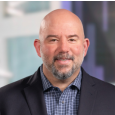Inspire Medical Systems, Inc., is a medical technology company dedicated to redefining the standard of care for obstructive sleep apnea (OSA).
Tim, as the founder of Inspire, could you share how the idea for the company originated and what has driven your long-term commitment?
Inspire came as a spinoff from Medtronic. The latter is one of the most innovative medical device companies in the world, but it is so large that not every promising idea can receive the investment needed to bring it to market. Inspire, for the treatment of obstructive sleep apnea, was one such idea. At the time, I was a Medtronic employee, and we recognized that this project would not get the funding it needed within the company. So we agreed to spin it out, and I founded Inspire Medical Systems in May 2007.
I have always had a passion for using neurostimulation technology to treat obstructive sleep apnea because it delivers strong outcomes and fills a real need for alternative therapies. As the company developed, we progressed through regulatory approvals in Europe and the US, and then focused on gaining reimbursement in both markets. Today, we are covered by nearly all US insurers, have over 1,200 employees, treated more than 90,000 patients globally, and we’re just getting started.
Can we get some context about the problem of obstructive sleep apnea? How many people suffer from it, and what portion of them do you hope to service?
Sleep is one of life’s key pillars alongside a good diet and exercise, and people increasingly understand the importance of quality sleep. Restorative sleep, particularly REM sleep, is vital for daily function and wellbeing. Obstructive sleep apnea occurs when the airway collapses during sleep, preventing air from reaching the lungs and disrupting oxygenation and deep sleep stages like REM.
CPAP, or continuous positive airway pressure, is the gold standard treatment, using a mask to keep the airway open. But many find it uncomfortable. Inspire offers an alternative—an implanted neurostimulator that activates the hypoglossal nerve during inhalation to hold the airway open. Over a billion people globally have obstructive sleep apnea, yet only 20-25% have been diagnosed. With only 2 million CPAP devices sold annually in the US and 90,000 Inspire patients treated since approval, we believe our target market in the US alone is around half a million people annually, meaning we’re still at the very early stages.
What are the steps you need to take to penetrate the market more deeply?
We are still a young company, so the first priority is raising awareness about Inspire. We launched Direct to Consumer Campaigns to educate both patients and healthcare providers—general practitioners and specialists—about Inspire as a viable alternative. As we grow our distribution teams globally, we build confidence in the therapy’s performance and outcomes.
We continue to invest heavily in technology improvements and awareness campaigns. This dual approach fuels our growth, and we expect to see that continue for many years. Expanding both our reach and our message is key to our strategy going forward.
What makes your therapy preferable to alternatives?
Inspire is a neural stimulator implanted under the skin with a lead connected to the hypoglossal nerve, which controls the upper airway muscles, particularly the tongue. During inhalation, the device stimulates this nerve to prevent the airway from collapsing—a key cause of obstructive sleep apnea.
We also have sensing technology that detects when a patient inhales or exhales, ensuring stimulation occurs at the right time. Our fifth-generation system, Inspire V, was recently approved by the FDA. It integrates sensing directly into the neurostimulator, simplifying surgery for patients and surgeons alike, and streamlining our manufacturing. Inspire V also allows for software upgrades, meaning future advancements can be delivered via updates, a major benefit for patients and a testament to our commitment to continuous innovation.
How prepared are you to respond to competition arising from GLP-1s, which have been proven to help with sleep apnea?
We do not see GLP-1 drugs as competition, because Inspire therapy is suitable only for patients with specific airway anatomy. Higher BMI patients often do not qualify, as excess weight leads to different airway collapses that our therapy does not address. We stimulate a nerve that moves the tongue forward, but higher BMI often causes sidewall collapse.
For those patients, we often recommend working with their doctors and using GLP-1 drugs to lose weight, potentially making them eligible for Inspire therapy in the future. So, GLP-1s and Inspire therapy complement each other, and these drugs actually help expand our total addressable market. We encourage Lilly to keep promoting them, as they help more patients access Inspire therapy by reducing BMI-related barriers.
Do you have a strategy for further geographical expansion?
Yes, in Asia we started with Japan, where we have full regulatory approval and reimbursement. We are currently scaling our team and establishing a stronger presence. Japan serves as a stepping stone to the wider Asia-Pacific region.
We also have strong partnerships in Singapore, including with Singapore General Hospital, which is one of the world’s largest and performs many Inspire implant procedures. Singapore was the first location to implant the Inspire V system, with 40 procedures last year. We have also done implants in Hong Kong and are exploring additional countries as part of our global expansion.
Where would you like to see the company by its 20th anniversary in two years?
We are approaching $1 billion in annual revenue, and 2024 was our first full year of profitability—a significant milestone. We are here for the long term, committed to patient care, investing in technology, awareness, and adoption of Inspire therapy. With only 90,000 patients treated out of a billion potential, our mission is clear: to offer safe, effective therapy for obstructive sleep apnea on a much larger scale.
In the coming years, I expect continued expansion not only in the US and Europe but across Asia and beyond. It is an inspiring time for our employees and partners—there’s a clear vision, and people want to be a part of it.





